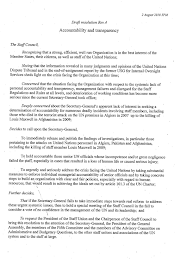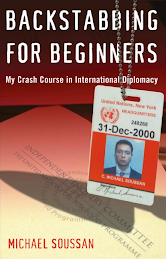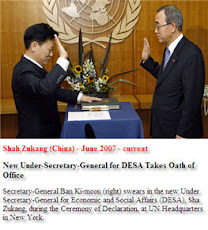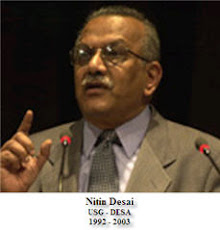

click here to read this on
Brahma Chellaney
NEW DELHI – Asia’s festering Cold War-era territorial and maritime disputes highlight the fact that securing long-term region-wide peace depends on respect for existing borders. Attempts to disturb Asia’s territorialstatus quo are an invitation to endemic conflict – a concern that led Asian states to welcome the US and Russia to their annual East Asian Summit.
The recent Sino-Japanese diplomatic spat over disputed islands in the East China Sea – followed, almost instantly, by a Sino-Vietnamese row over similar atolls – has put the spotlight on China and its regional policy. Governments across Asia are concerned that China’s rapidly accumulating power is emboldening it to assert territorial and maritime claims against neighbors stretching from Japan to India. Even against tiny Bhutan, China has stepped up its lands claims through military incursions.
China’s new stridency underscores Asia’s central diplomatic challenge: coming to terms with existing boundaries by shedding the baggage of history that burdens all of the region’s important inter-state relationships. Even as Asia is becoming more interdependent economically, it is becoming more politically divided.
A number of inter-state wars were fought in Asia since 1950, the year that both the Korean War and the annexation of Tibet started. But, whereas the Europe’s bloody wars in the first half of the twentieth century have made war there unthinkable today, the wars in Asia in the second half of the twentieth century, far from settling or ending disputes, only accentuated bitter rivalries.
China, significantly, has been involved in the largest number of military conflicts in Asia. A recent Pentagon report is unsparing: “The history of modern Chinese warfare provides numerous case studies in which China’s leaders have claimed military preemption as a strategically defensive act. For example, China refers to its intervention in the Korean War (1950-1953) as the ‘War to Resist the United States and Aid Korea.’ Similarly, authoritative texts refer to border conflicts against India (1962), the Soviet Union (1969), and Vietnam (1979) as ‘Self-Defense Counter Attacks.’” The seizure of the Paracel Islands from Vietnam in 1974 by Chinese forces was another example of offense as defense.
All these cases of preemption occurred when China was weak, poor, and internally torn. So the growing power of today’s China naturally raises legitimate concerns.
Having earlier preached the gospel of its “peaceful rise,” China no longer is shy about showcasing its military capabilities and asserting itself on multiple fronts. With the Chinese Communist Party increasingly dependent on the military to maintain its monopoly on power and ensure domestic order, senior military officers are overtly influencing foreign policy. The result is a growing territorial assertiveness, which has become a source of new friction along China’s land and sea frontiers. That, in turn, has put China at the center of Asia’s political divides.
Several developments this year underscore China’s more muscular foreign policy, from its inclusion of the South China Sea in its “core” national interests – a move that makes its claims to the disputed Spratly Islands non-negotiable – to its reference to the Yellow Sea as a sort of exclusive Chinese military-operations zone. The US and South Korea should, according to Chinese officials, discontinue holding joint naval exercises there, apparently out of respect for China’s new power.
China also has become more insistent in pressing its territorial claims both to India’s northeastern Arunachal Pradesh state and to the Japanese-controlled Senkaku Islands, with Chinese warships making more frequent forays into Japanese waters. Indian defense officials have reported a sharp increase in Chinese military incursions across the disputed 4,057-kilometer Himalayan frontier and in aggressive patrolling. China also has started questioning Indian sovereignty over the state of Jammu and Kashmir, one-fifth of which it occupied following the Tibet annexation.
Beijing’s 2004 spat with South Korea over the ancient kingdom of Koguryo – triggered by a revised historical claim posted on the Chinese foreign ministry’s Web site that the empire, founded in the Tongge river basin of northern Korea, was Chinese – was seen as an attempt to hedge China’s options vis-à-vis a potentially unified Korea. By signaling that the present China-North Korea border may not be final, Beijing has raised the specter of potential tensions over frontiers in the future.
Against that background, China’s increasingly assertive territorial and maritime claims threaten Asian peace and stability. In fact, the largest real estate China covets is not in the South or East China Seas: India’s Arunachal Pradesh is almost three times larger than Taiwan.
Respect for boundaries is a prerequisite to peace and stability on any continent. Europe has built its peace on that principle, with a number of European states learning to live with boundaries that they don’t like. But the Chinese Communist Party still harps on old grievances to reinforce its claim to legitimacy: full restoration of China’s “dignity” after a century of humiliation at the hands of foreign powers.
Through its overt refusal to accept Asia’s territorial status quo, China only highlights the futility of political negotiations. After all, frontiers are never significantly redrawn at the negotiating table, but only on the battlefield, as China has shown in the past.
Today, whether it is Arunachal Pradesh or Taiwan or the Senkaku Islands or even the Spratlys, China is dangling the threat of force to assert its claims. By picking territorial fights with its neighbors, China is not only reinforcing old rivalries, but is also threatening Asia’s continued economic renaissance – showing that it is not a credible candidate to lead Asia.
It is important for other Asian states and the US – a “resident power” in Asia, in the words of US Defense Secretary Robert Gates – to convey a clear message to China: a peaceful rise and unilateral redrawing of frontiers don’t mix.
Brahma Chellaney is Professor of Strategic Studies at the Center for Policy Research in New Delhi and the author of Asian Juggernaut: The Rise of China, India and Japan.






















No comments:
Post a Comment